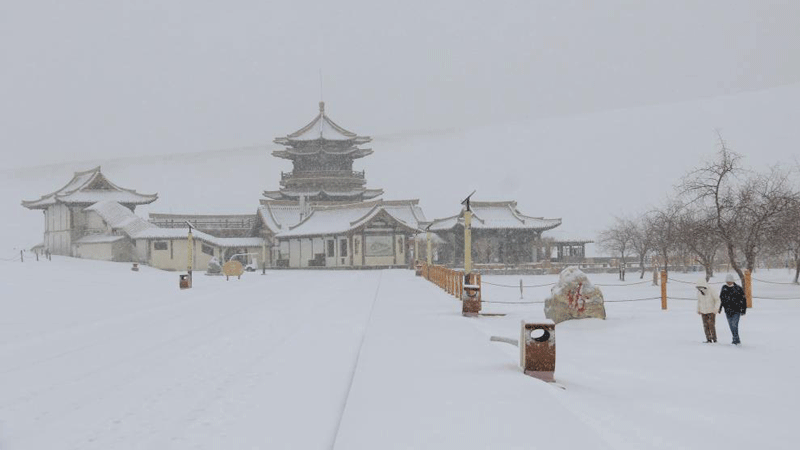Nov manufacturing PMI remains in contraction status on COVID cases

An employee works on the auto parts production line of a carmaker in Yantai, Shandong province. TANG KE/FOR CHINA DAILY
China's factory activity contracted in November as renewed COVID-19 outbreaks disrupted output and subdued demand, a business survey showed on Thursday.
Although business activity has been stifled by the pandemic, experts believe the government's recent measures to fine-tune its COVID policy alongside targeted macroeconomic policy easing will help stabilize the economy and buffer COVID-19's impact.
They expect to see stronger fiscal stimulus moves and further monetary easing to shore up growth, with infrastructure investment continuously doing the heavy lifting to support GDP growth in the coming year.
The Caixin China General Manufacturing Purchasing Managers' Index rose modestly to 49.4 in November from 49.2 in October, staying in contraction territory for the fourth consecutive month, media group Caixin said on Thursday.
A PMI reading above 50 signifies economic expansion, while one below 50 signals contraction.
Wang Zhe, a senior economist at Caixin Insight Group, said both manufacturing supply and demand continued to shrink last month due to the increasing COVID outbreaks.
However, business optimism has strengthened. The gauge for manufacturers' expectations for future output picked up despite pressure from the pandemic, with businesses remaining confident that the outbreaks would soon wane.
"COVID outbreaks have been spreading across China since October, and their impact on the economy has grown more and more obvious," Wang said. "How to balance COVID controls and economic growth has once again become a core issue."
Wang said the market is in urgent need of policies to promote employment and boost domestic demand, and the government should further coordinate fiscal and monetary policies to expand domestic demand and raise the take-home pay of low-income people.
The Caixin survey results came after the National Bureau of Statistics on Wednesday released official manufacturing PMI readings, which dipped to 48 in November from 49.2 in October, the lowest since April of this year.
By firm size, the official manufacturing PMI in November for large, medium-sized and small firms all dropped to 49.1, 48.1 and 45.6, respectively, from 50.1, 48.9 and 48.2 in October, with manufacturing activity among smaller firms shrinking at a faster rate.
Yang Xin, an analyst at Shanghai-listed Hongta Securities, said the pandemic has weighed on business activity and warned of pressures and difficulties faced particularly by small businesses.
Citing the latest announcement by the People's Bank of China, the country's central bank, to cut the reserve requirement ratio for lenders, Yang said it will help maintain ample liquidity in the financial system and expects to see more steps to ensure stable supplies and expand demand.
The PBOC announced on Friday that it would cut the RRR for financial institutions by 0.25 percentage point on Monday — a key move to boost financing of the real economy.
Wen Bin, chief economist at China Minsheng Bank, said policymakers are ramping up efforts to stabilize the overall economy.
Owing to the COVID-19 impact, Wen expects the economy to expand at a slower pace in the fourth quarter than in the third, saying the government needs to step up policy support to reverse the downward economic trend.
Photos
Related Stories
- China's non-manufacturing PMI down in November
- Smart manufacturing drives China's high-quality growth
- China's electronic information manufacturing reports sound performance
- China's non-manufacturing PMI down in October
- China's manufacturing PMI down in October
- China PMI picks up in September, industry sentiment improves
Copyright © 2022 People's Daily Online. All Rights Reserved.









